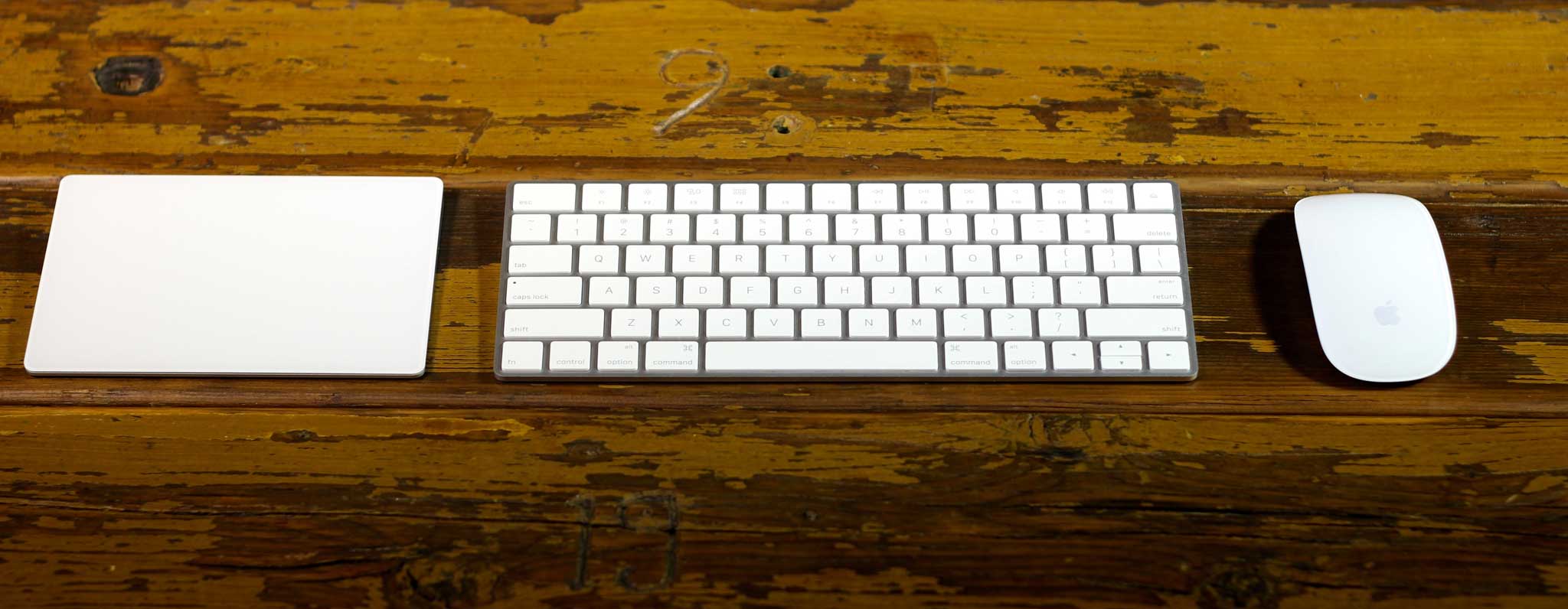
By Jason Snell
October 13, 2015 5:32 AM PT
Apple Magic Trackpad 2 review
Note: This story has not been updated for several years.
I never really liked mice. My first computers didn’t have them, and by grad school I had switched to a PowerBook with its built-in trackball, so there was only a narrow window of three or four years where I used a mouse every day. The moment I first saw a desktop trackball, in the offices at MacUser, I was hooked.
After years of using Apple’s trackpads on laptops and getting used to all the fancy multi-touch gestures, I finally switched from a trackball to Apple’s Magic Trackpad on the desktop. (Like the name implies, trackpads really do feel quite similar to trackballs in terms of feel, at least for me—it’s all about big open-handed gestures instead of tiny, careful death-grip movements.)
I love the Magic Trackpad. And as of today, with the arrival of the Magic Trackpad 2, the Magic Trackpad is bigger and better than ever.
The new $129 Magic Trackpad 2 is strikingly different in appearance from the original.

Gone is the big hump at the top that wrapped around the two AA batteries that powered it. This new trackpad, like the new Magic Keyboard and Magic Mouse 2, is rechargeable via a Lightning cable—in this case, it’s located on the back of the trackpad. Apple says the Magic Trackpad 2 can last a month or more on a single charge, and it takes about two hours to charge it back up.
Also gone is the silver color scheme—the Magic Trackpad 2 is all white, color matched to the keycaps of the Magic Keyboard rather than its aluminum frame. The entire top of the Magic Trackpad 2 is a touch surface—measuring 4.5 inches tall by 6.3 inches wide (the old model was basically a five-by-five square)—and its surface area is 29 percent larger than the old model.
Oh, and did I mention that it does Force Touch?

The original Magic Trackpad has two rubber feet at the bottom that depress when you push down—that’s how it registers a click. The new one doesn’t click at all. Its glass touch surface floats above pressure sensors that detect force anywhere on the surface and trigger a haptic response, a vibration that your brain interprets as a click. To aid in the process, the Magic Trackpad apparently even generates its own artificial clicking noise (as the Force Touch trackpads in the MacBook and MacBook Pro do). If you think that’s weird, you can enable Silent Clicking in the Trackpad system preferences pane, and the artificial sound will shut off. (There’s still a sound when you click, though, thanks to the vibration—but it’s much subtler.)
As on the MacBook, it’s kind of hard to believe that the Magic Trackpad 2 isn’t actually clicking when you push down. The glass does flex with the pressure a little bit, but that clicking feeling is entirely artificial. To test it, just switch off the Magic Trackpad 2 and try to click. Nope—nothing. (I made a little video—it’s blurry, sorry about that—to illustrate these three different modes, so check that out if you’re interested.)
And, like with those Force Touch trackpads, once your click is artificial you can emulate all sorts of clicks, by providing additional feedback as you push through the first click and keep adding pressure. It works well and force-clicking seems like a natural gesture, but there still aren’t very many places where this feature gets used right now. Maybe all the Mac app developers will run out and buy a Magic Trackpad 2 so they can finally live with this functionality and start figuring out how to use it to improve and extend their user interfaces. Right now, it’s still more of a novelty.
Still, I like the new Magic Trackpad. I like that it’s got more surface, that it brings Force Touch to the desktop for the first time, and that it’s rechargeable (and supports the same plug-to-pair feature as the Magic Mouse 21 and the Magic Keyboard, so you don’t have to fiddle with Bluetooth settings in order to pair it with your Mac). It brings all the goodness of Apple’s laptop trackpads to the desktop. I’d never go back to a mouse, or a trackball, ever again.
Update: The Magic Trackpad 2 requires Bluetooth 4, so older devices may be incompatible. But! If you plug a Magic Trackpad 2 into a Mac via the included Lightning-to-USB cable, it works even if Bluetooth is off. I can’t confirm that it’ll work on older Macs via wired mode, but it might.
- I also have a $79 Magic Mouse 2 here with me. It’s rechargeable, too, but the Lightning port is on the bottom of the mouse. (Apple says that it can charge for a full day’s work in about a minute, so if it ever runs out of juice you’ll be back in action in no time.) Apple also says its structure is more rigid, with redesigned feet, and it’s lighter. Regardless, I’m not reviewing the Magic Mouse 2. ↩
If you appreciate articles like this one, support us by becoming a Six Colors subscriber. Subscribers get access to an exclusive podcast, members-only stories, and a special community.

